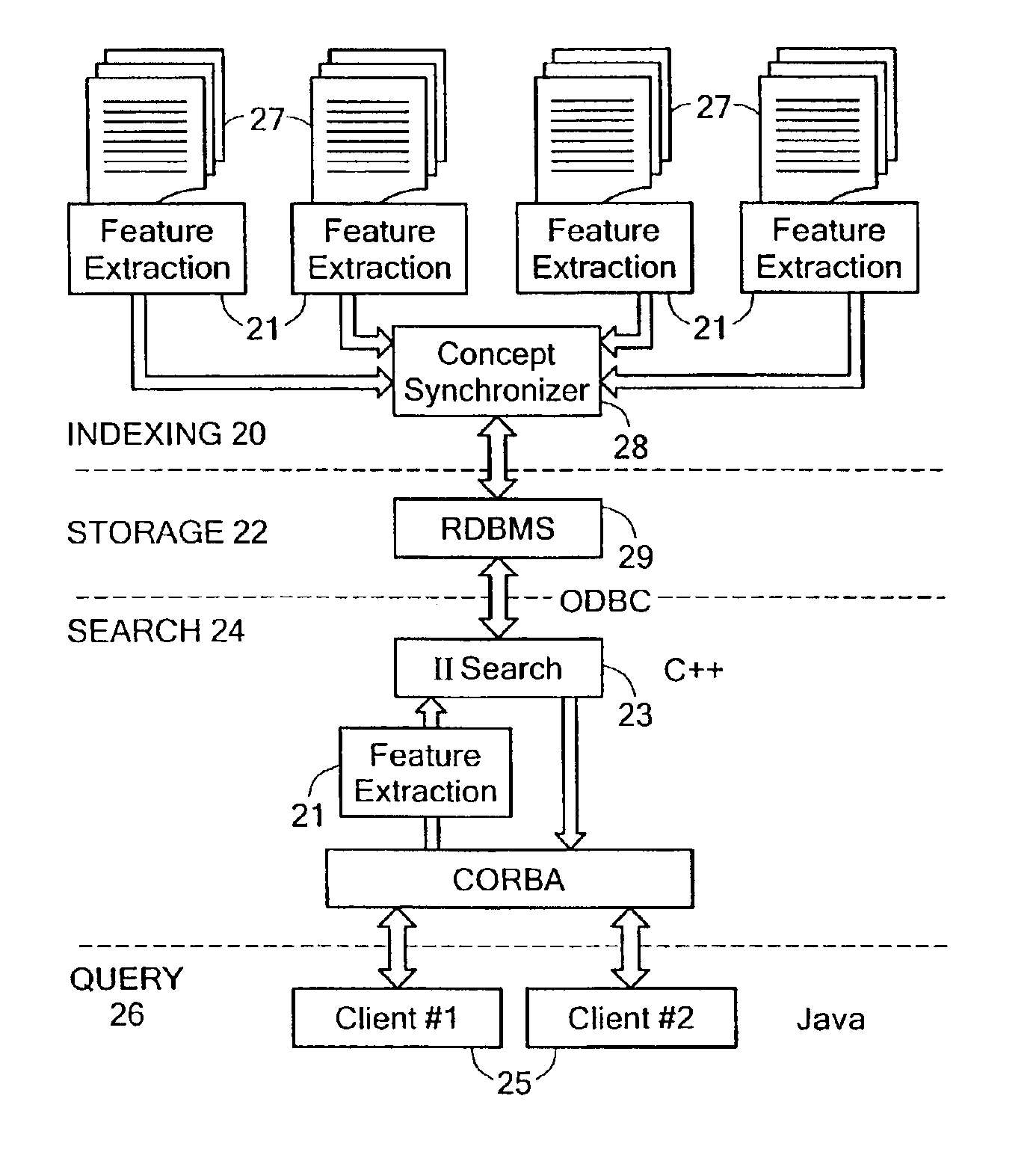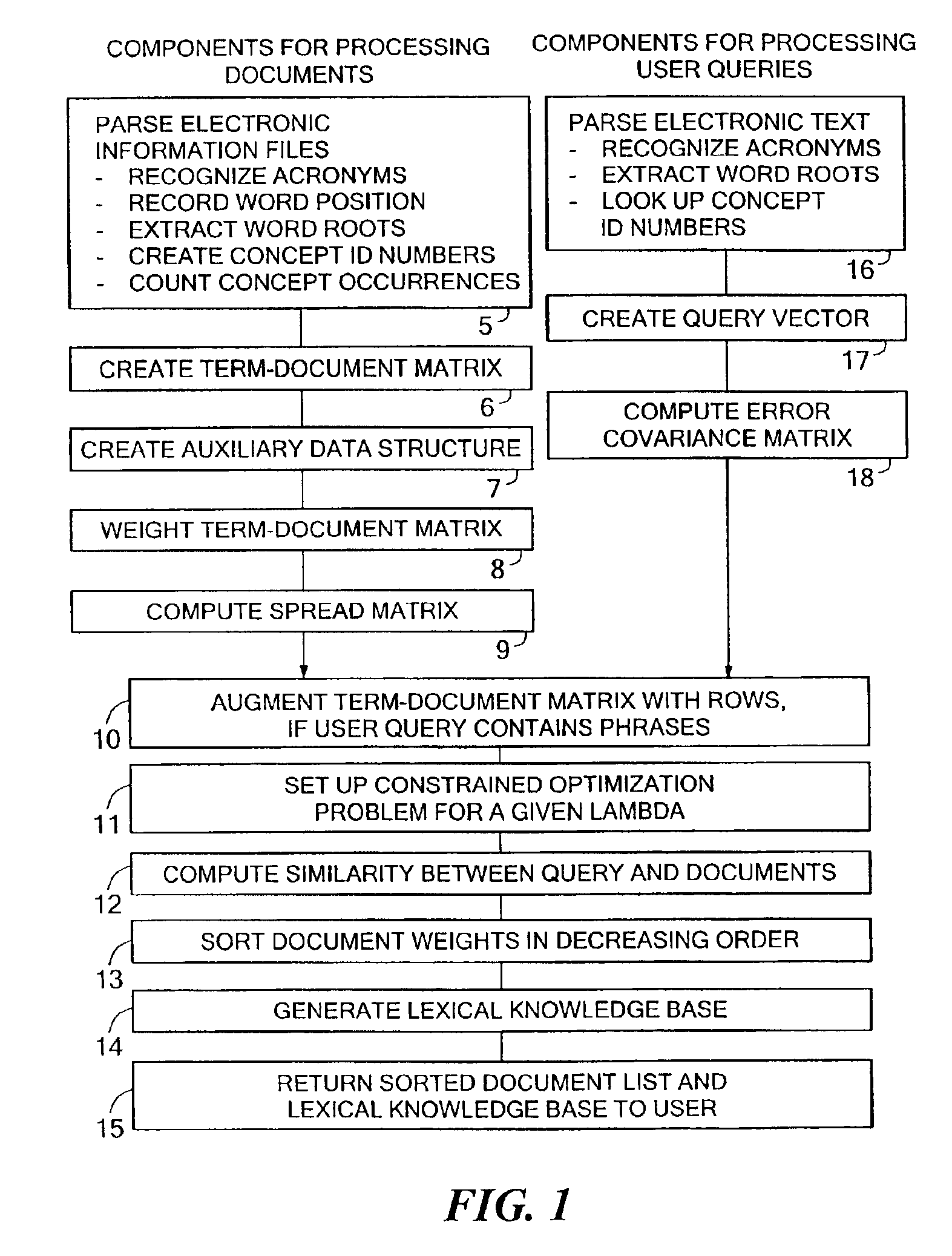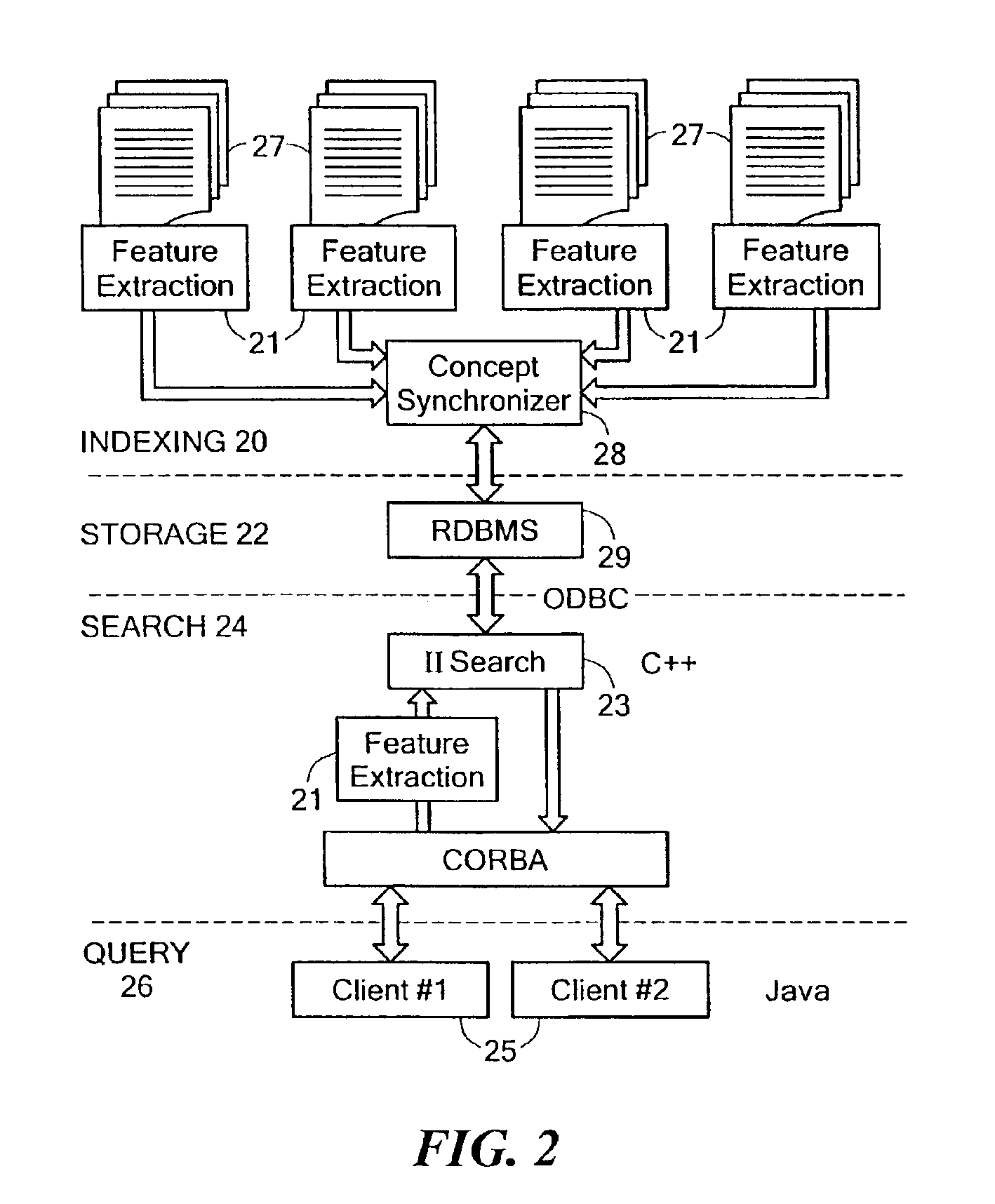Inverse inference engine for high performance web search
a web search and inverse inference technology, applied in the field of computer-based information retrieval, can solve the problems of inability to theoretically justify the use of cosine metric to measure similarity, the assumption of independence of terms, and the enormous commercial potential of information retrieval systems that can query unstructured text or multimedia collections with high speed and precision. achieve the effect of improving computational speed
- Summary
- Abstract
- Description
- Claims
- Application Information
AI Technical Summary
Benefits of technology
Problems solved by technology
Method used
Image
Examples
Embodiment Construction
[0031]The disclosure of provisional patent application Ser. No. 60 / 125,704 filed Mar. 23, 1999 is hereby incorporated by reference.
[0032]As illustrated by the steps shown in FIG. 1, the disclosed system computes a constrained measure of the similarity between a query vector and all documents in a term-document matrix. More specifically, at step 5 of FIG. 1, the disclosed information retrieval system parses a number of electronic information files containing text. In an illustrative embodiment, the parsing of the electronic text at step 5 of FIG. 1 may include recognizing acronyms, recording word positions, and extracting word roots. Moreover, the parsing of step 5 may include processing of tag information associated with HTML and XML files, in the case where any of the electronic information files are in HTML or XML format. The parsing of the electronic information files performed at step 5 may further include generating a number of concept identification numbers (concept IDs) corre...
PUM
 Login to View More
Login to View More Abstract
Description
Claims
Application Information
 Login to View More
Login to View More - R&D
- Intellectual Property
- Life Sciences
- Materials
- Tech Scout
- Unparalleled Data Quality
- Higher Quality Content
- 60% Fewer Hallucinations
Browse by: Latest US Patents, China's latest patents, Technical Efficacy Thesaurus, Application Domain, Technology Topic, Popular Technical Reports.
© 2025 PatSnap. All rights reserved.Legal|Privacy policy|Modern Slavery Act Transparency Statement|Sitemap|About US| Contact US: help@patsnap.com



